The Prehistoric Pile Dwellings around the Alps are the remains of prehistoric settlements in the lakes and moors around the Alps. The UNESCO World Heritage Site Prehistoric Pile Dwellings around the Alps consists of 111 locations spread over six countries around the Alps: Austria, France, Italy, Slovenia, Switzerland and Germany. The prehistoric pile dwellings were built in the period 5000 BC to 500 BC. The remains of the prehistoric wooden pile dwellings provide a lively insight into the lives of early agricultural societies and the development of ancient farming methods around the Alps. Due to the rising water level most of the remains of the prehistoric pile dwellings are not visible, now they only can be found underwater. Several Pile Dwelling Museums houses collections of objects found by archaeologists during their research, these objects mainly include pottery and tools, the objects fell into the lakes during prehistoric daily life or when the pile dwellings collapsed over the course of time. A number of reconstructed prehistoric pile dwellings are located in the Pfahlbaumuseum in Unteruhldingen on the shores of Lake Constance in Germany. The reconstructed pile dwellings gives a lively insight in the way prehistoric people lived. Some other locations of the prehistoric pile dwellings around the Alps: The Islet of Virginia in Italy and the Mondsee Lake in Austria. The pile dwellings are also called stilt houses or palafittes. The Prehistoric Pile Dwellings around the Alps gained the status as a UNESCO World Heritage in 2011. World Heritage Art: Palafitte
www.werelderfgoedfotos.nl © Copyright World Heritage Photos classic car road trip
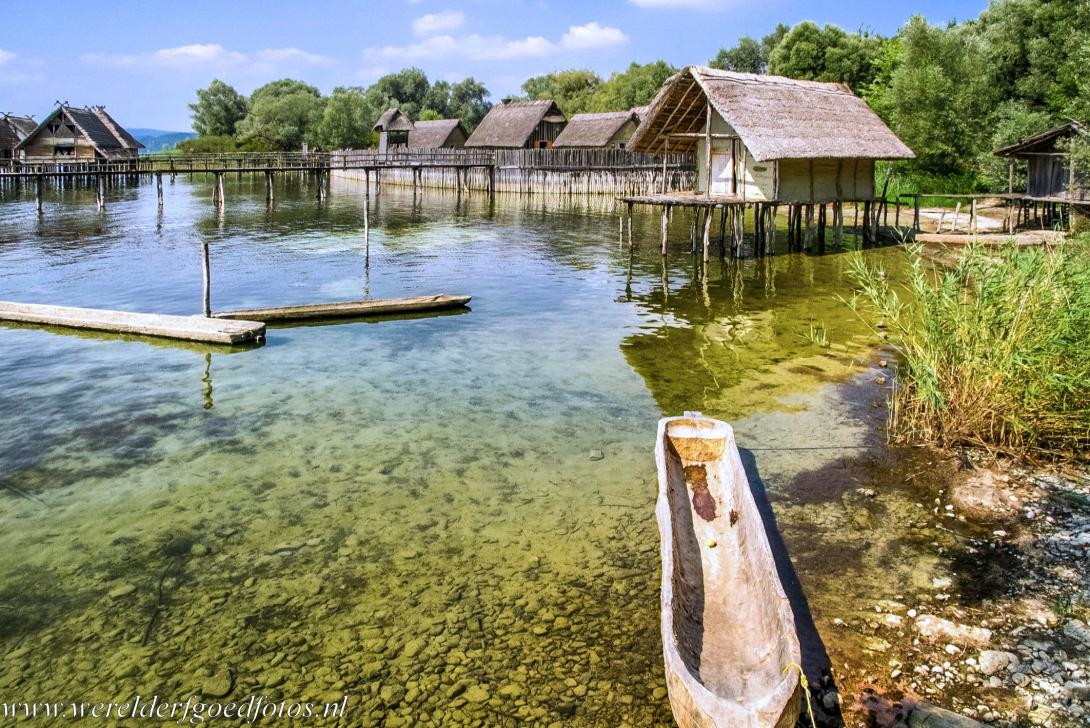
Prehistoric Pile Dwellings around the Alps: A reconstructed prehistoric pile dwelling village. The prehistoric pile dwelling village can be seen in the Pfahlbaumuseum in Unteruhldingen on Lake Constance (Bodensee). The museum provides a lively insight into the early agricultural societies in the Alpine region in the period 4000 BC- 850 BC. The UNESCO World Heritage Prehistoric Pile Dwellings around the Alps consists of 111 locations spread over six countries around the Alps. The prehistoric pile dwellings are the remains of prehistoric settlements in the lakes and moors around the Alps.

Prehistoric Pile Dwellings around the Alps: A reconstructed prehistoric pile dwelling village. The prehistoric pile dwelling village can be seen in the Pfahlbaumuseum in Unteruhldingen on Lake Constance (Bodensee). The museum provides a lively insight into the early agricultural societies in the Alpine region in the period 4000 BC- 850 BC. The UNESCO World Heritage Prehistoric Pile Dwellings around the Alps consists of 111 locations spread over six countries around the Alps. The prehistoric pile dwellings are the remains of prehistoric settlements in the lakes and moors around the Alps.
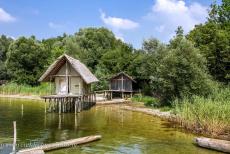
Prehistoric Pile Dwellings around the Alps: The reconstructed Hornstaad House and the Arbon House in the background. The Hornstaad House was erected in accordance with the research results from Lake Constance. The Late Neolithic Arbon House is the result of a joint project by German and Swiss archaeologists. The Prehistoric pile dwellings have been in existence at the shores of all large lakes around the Alps, they were discovered at lakes in Austria, France, Italy, Germany, Slovenia and Switzerland, but also were found at some lakes in Latvia, Lithuania and Spain. The prehistoric pile dwellings around the Alps became a World Heritage in 2011.
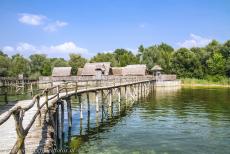
Prehistoric Pile Dwellings around the Alps: The reconstructed pile dwellings in the Neolithic Age Village in Unteruhldingen, Germany. The Neolithic Age Village was reconstructed according to the archaeological discoveries at the Federsee and the municipality Sipplingen at the Bodensee, Lake Constance. The Pfahlbaumuseum (Lake Dwelling Museum) in Unteruhldingen is a spacious open-air museum with reconstructed pile dwellings from the period 4000 BC to 850 BC, the first pile dwellings were reconstructed in 1922, based on archaeological excavations. The prehistoric pile dwellings are also called stilt houses or palafittes.
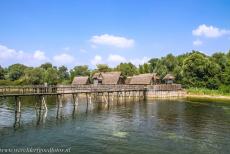
Prehistoric Pile Dwellings around the Alps: A reconstructed prehistoric pile dwelling village in the Pfahlbaumuseum in Unteruhldingen in Germany. The Neolithic Age, the New Stone Age, Village was reconstructed according to archaeological finds. This reconstructed Neolithic Age Village is surrounded by a reed palisade. The first houses were reconstructed in 1922, these houses were reconstructed with the same materials and techniques as used in the Stone Age, about 3500 BC. The series of 111 prehistoric pile dwellings in six countries around the Alps was inscribed on the UNESCO World Heritage List in 2011.
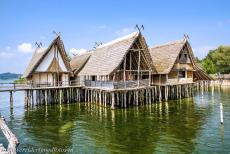
Prehistoric Pile Dwellings around the Alps: This pile dwelling village was reconstructed according to artefacts found in Lake Constance. This reconstructed pile dwelling village is situated in the village of Unteruhldingen in Germany. During the Stone Age and Bronze Age, smaller and larger settlements existed on the shores of Lake Constance, the prehistoric settlements could possibly have five or eighty houses. Due to the rising water level related to global warming, most of the remains of the prehistoric pile dwellings are not visible, now they only can be found underwater, but the reconstructed pile dwellings gives a lively insight in the way the prehistoric people lived.
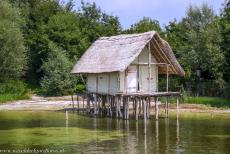
Prehistoric Pile Dwellings around the Alps: The reconstructed Neolithic Hornstaad House in Unteruhldingen on Lake Constance. The Hornstaad House was reconstructed by four craftsmen of the Pfahlbaumuseum in Unteruhldingen, the house was reconstructed during the summer of 1996 in just twenty days. The house is made of wood, grass and clay. The reconstruction of the house is based on the results of archaeological excavations of the oldest lake dwellings (3617 BC) on the shores of Lake Constance. In 2009, the house was completely destroyed by a severe hail storm. The Hornstaad House was rebuilt in 2011.
